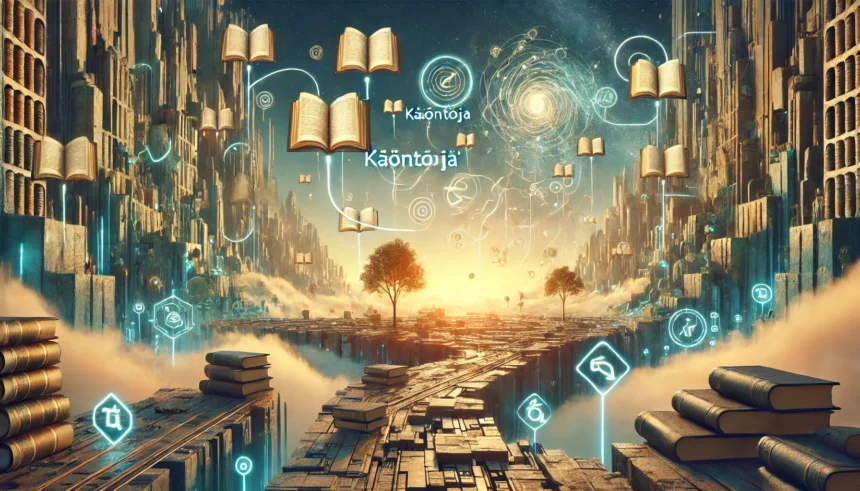The word “käöntöjä” comes from Finnish and translates to “translations” in English. Translations play a crucial role in communication by helping people understand different languages. Whether in literature, business, or technology, the ability to translate words accurately allows people from different cultures to share ideas, knowledge, and information.
The goal of translation is not just to change words from one language to another but also to keep the original meaning, tone, and cultural context. A good translation ensures that people in different parts of the world can understand each other clearly.
The Role of Translations in Communication
Bridging Language Barriers
Not everyone speaks the same language, and this can create problems when people try to communicate. Translations break down these barriers by allowing people to read, listen, and understand content in their own language. This is especially important in international business, travel, and diplomacy.
Promoting Cultural Understanding
Languages carry cultural meanings that may not always have a direct equivalent in other languages. Translators help adapt content so that people can understand the meaning without losing cultural significance. For example, proverbs, jokes, and idioms often need careful translation to make sense in another language.
Supporting Global Collaboration
The world is more connected than ever before. Businesses, governments, and individuals constantly communicate across borders. Accurate translations help people share ideas, sign agreements, and work together, making international cooperation smoother.
Types of Translations
There are many types of translations, each serving a different purpose.
Literary Translations
These involve translating books, poems, plays, and other creative works. This type of translation requires not just accuracy but also creativity to keep the style and tone of the original writing.
Technical Translations
Technical translations are used in medicine, engineering, science, and law. They require specialized knowledge because small mistakes in these areas can have serious consequences.
Machine Translations
These involve computer programs that translate text automatically. Examples include Google Translate and DeepL. While useful for basic translations, machines often fail to understand context, tone, and idioms correctly.
Localization
Localization is more than just translation—it adapts content to fit the culture of the target audience. This includes changing date formats, currency, images, and even humor to make the content feel more natural to local readers.
Challenges in the Translation Process
Language Nuances
Different languages have unique grammatical structures, idioms, and expressions that may not have direct equivalents in other languages. For example, the German word “Schadenfreude” means “happiness at someone else’s misfortune,” but there is no single English word for this.
Cultural Differences
Some words or phrases carry cultural meanings that are difficult to translate. For example, in Japan, “itadakimasu” is said before meals, but in English, there is no exact translation for this phrase. Instead, people might say “Let’s eat” or “Bon appétit.”
Maintaining Tone and Style
Different types of writing have different tones. A formal business document needs a professional tone, while a novel might need an emotional or poetic style. Translators must understand and match the original tone.
Risk of Losing Meaning
Sometimes, words cannot be directly translated without losing part of their meaning. For example, sarcasm and humor often do not translate well into other languages.
Tools and Technology in Translations
Human Translators
Human translators are still the best for accurate and high-quality translations, especially for literature, legal documents, and business negotiations.
Translation Software
Tools like Google Translate, Microsoft Translator, and DeepL can quickly translate words or sentences, but they often struggle with accuracy and cultural understanding.
Translation Memory (TM) Systems
These are software tools that store past translations and suggest similar phrases for new translations. They help ensure consistency in business and legal documents.
The Importance of Accurate Translations
Global Business
Companies that work internationally need clear and accurate translations for contracts, advertisements, and customer communication. Mistakes in translation can lead to misunderstandings, lost deals, or even legal problems.
Legal and Medical Fields
Accuracy is critical in law and medicine. A mistranslation in a legal contract could change the meaning of an agreement, leading to legal issues. In medicine, a translation error in a prescription or medical report could be dangerous.
Cultural Exchange
Translations allow people to experience foreign literature, films, history, and traditions. Without translations, many great books and ideas would remain unknown to people who do not speak the original language.
Careers in Translation
Translation is a growing field with many job opportunities.
Professional Translators
These are experts who translate texts in literature, business, law, science, or entertainment. They ensure accuracy while maintaining the original meaning.
Certified Translators
Certified translators must pass official exams to prove their skills. Many governments and organizations require certified translations for documents like birth certificates, legal agreements, and medical records.
Freelance Translators
Many translators work as freelancers, offering services for books, websites, subtitles, and more. They often work remotely for clients around the world.
Conclusion
Translations, or käöntöjä, are essential in today’s globalized world. They help people communicate, understand different cultures, and share knowledge across languages. Whether through human experts or technology, translations continue to evolve and improve.
As the world becomes even more connected, the need for accurate and high-quality translations will only increase. While machine translation tools are advancing, human expertise remains necessary to preserve meaning, context, and cultural significance.
By understanding the importance of translations, we can appreciate how they shape business, communication, education, and cultural exchange in our daily lives.
FAQs
Why is human translation better than machine translation?
Human translators understand context, tone, and cultural nuances, while machine translations often lack accuracy and natural flow.
What is the biggest challenge in translation?
The hardest part is keeping the original meaning while adapting idioms, humor, and culture-specific expressions to a different language.
How does localization differ from translation?
Localization adapts content for cultural, legal, and linguistic differences, while translation focuses only on converting words.
Can AI replace human translators in the future?
AI is improving, but it struggles with complex texts, emotions, and cultural depth, so human translators will still be needed.
Why do some words have no direct translation?
Languages evolve differently, and some concepts are unique to specific cultures, making direct translations impossible.


